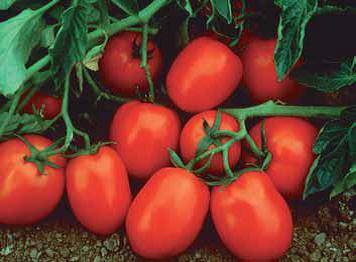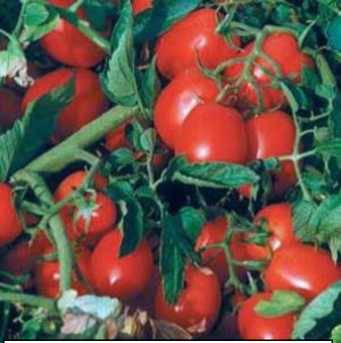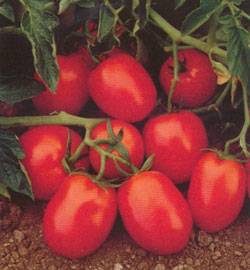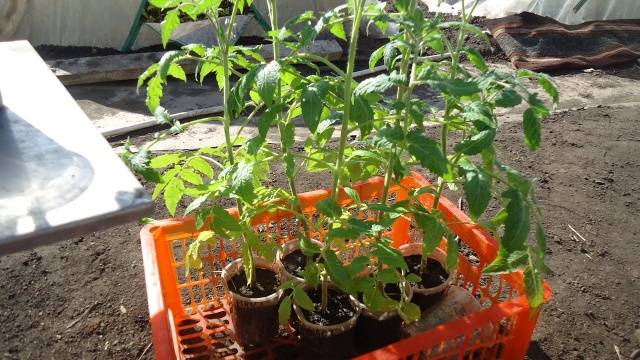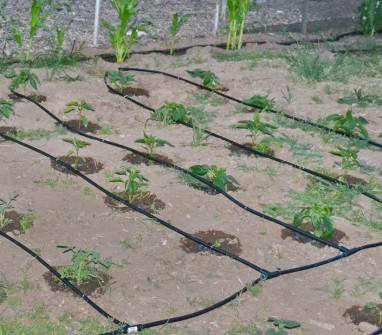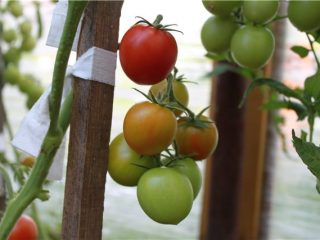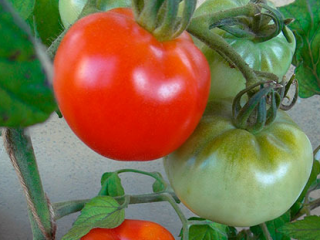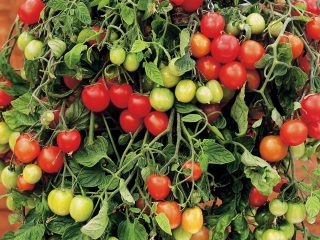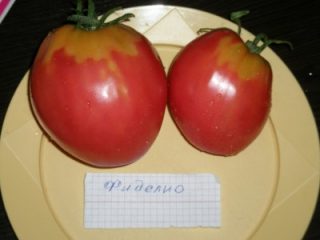Content
Tomato is one of the favorite crops among gardeners. It is attracted not only by the excellent taste of this vegetable, but also by the ability to widely use it for the preparation of various dishes and preparations. There are versatile varieties of tomatoes that are equally good in any form. But they cannot be the most suitable for any purpose. The tomato used for making juice should contain as much of it as possible, and the tomato from which the tomato paste is made should contain the most dry matter. And these are mutually exclusive properties. It is quite difficult to develop a variety that would meet any one specific requirements without genetic engineering. It's much easier to do this by creating a hybrid.
What is tomato hybrid
At the beginning of the 20th century, American breeders Shell and Jones carried out work on the hybridization of corn and were very successful in this. Their technique was used in the development of hybrid varieties of nightshade crops, including tomatoes, which soon appeared on the market.
During hybridization, the genes of the parents are inherited, which give the hybrid certain properties, taken from each of them. Parent varieties of tomatoes are selected in accordance with what qualities you would like to get from a new plant. If you cross a tomato variety that has large fruits, but low productivity with another variety, a high-yielding, but small-fruited, there is a high probability of obtaining a high-yield hybrid with large fruits. Genetics allows you to select parents for hybrids purposefully and achieve the desired result. The vitality of the hybrids is higher than that of the parental forms. This phenomenon is called heterosis. It is noticed that it is higher in those hybrids whose parents have more differences.
Tomato Chibli f1 is a heterotic hybrid of the first generation. It is grown specifically for canning. The dense skin will not burst if you pour boiling water over it when placing it in pickling jars. The high solids content makes the fruit firm. Such pickled tomatoes are easily cut with a knife. Chibli f1 can be used to make excellent tomato paste. This does not mean that it cannot be eaten raw. It is quite possible to make a salad from it, but its taste will differ slightly from the usual traditional varieties of tomatoes. If you decide to plant this tomato in your garden, let's get to know it better, and for this we will give it a full description and characteristics and look at the photo.
Description and characteristics of the hybrid
For the first time, the Chibli f1 hybrid was bred in the former Swiss and now Chinese seed company Syngenta. It turned out to be so successful that many seed companies have bought the technology for the production of this hybrid and are producing seeds on their own. In the south of our country, there are seed farms that work under the Syngenta partnership program and produce seeds using its technology.
The Chibli tomato f1 got into the State Register of Agricultural Achievements in 2003.Since then, it has received many positive reviews from both amateur gardeners and professionals who grow tomatoes in an industrial way.
The f1 Chibli tomato hybrid is classified as medium early. When sown directly into the ground, the first fruits begin to ripen after 100 days. If you use a seedling growing method, the crop begins to be harvested 70 days after the seedlings have been planted.
Chibli tomato bush f1 is distinguished by strong growth, forms a large number of leaves, so in the south the fruits do not suffer from sunburn. In the northern regions, it is sufficient to remove the leaves after the formation of the first brush. It is laid over 7 or 8 sheets.
Chibli f1 belongs to determinant tomatoes, its height does not exceed 60 cm.The plant is quite compact, so it can be planted according to the 40x50 cm scheme.
Chibli tomato f1 has a strong root system, especially when sown directly into the ground, therefore it tolerates drought well and beyond.
This tomato perfectly adapts to any growing conditions, because of this, it is zoned everywhere. Strong roots perfectly nourish the plant, allowing it to form a significant harvest of fruits - 4, 3 kg from each square. m.
The fruits, like all hybrids, are one-dimensional, have an attractive cuboid-oval shape and a bright red color. The weight of one tomato ranges from 100 to 120 g. It looks great in jars; when preserved, the dense skin does not crack. Pickled tomatoes taste excellent. Dense fruits with a solids content of up to 5.8% give a delicious tomato paste. Raw Chibli tomato f1 is quite suitable for summer salads.
Like the rest of Syngenta's hybrids, the f1 Chibli tomato has a high vitality and does not suffer from viral diseases such as fusarium and verticillary wilting. It is not to the taste of the nematode either.
Dense fruits are stored for a long time, they can be transported over long distances without loss of quality. In the photo there are tomatoes prepared for transportation.
More information about the f1 Chibli tomato can be seen in the video:
Hybrid tomatoes show all their positive qualities only with a high level of agricultural technology and compliance with all growing rules.
Care features
Chibli tomato f1 is intended for outdoor cultivation. There are no problems with heat in the southern regions. In the middle lane and to the north in summer, there is a large difference between day and night temperatures, which leads to stress in plants. At temperatures below 10 degrees Celsius, f1 stops growing. And such cold nights are not uncommon even in summer. To make the plants comfortable, it is advisable to provide temporary shelters - at night, cover the plants with a film thrown over the arcs. In cold and damp weather, it is not removed even during the day in order to protect tomatoes from late blight disease.
Without seedlings, the Chibli f1 hybrid can only be grown in the south. Sown into the ground in the middle lane and to the north, it simply will not have time to reveal its potential, since the ground warms up slowly in spring.
How to grow seedlings
Typically, Syngenta seeds are already prepared for sowing and treated with all the necessary substances, so they do not need to be treated or soaked. They germinate a couple of days earlier than the seeds of other companies.
When preparing the soil for sowing seeds of the Chibli f1 hybrid, you need to remember that its temperature should be about 25 degrees. It is in this case that the seeds will sprout quickly and amicably.
To get high-quality stocky seedlings, immediately after germination, the temperature is maintained within 20 degrees during the day and 17 degrees at night. In case of insufficient lighting, it is necessary to organize additional lighting of Chibli tomato seedlings f1.
After the formation of two true leaves, the seedlings dive into separate containers. Seedlings of this hybrid are planted in the ground at the age of 35-40 days. By this time, it should have at least 7 leaves and a well-marked flower cluster.
Further care of the tomato
It is possible to plant Chibli tomato seedlings f1 in the ground when the soil has warmed up to a temperature of 15 degrees. In colder soil, the roots of tomatoes can only assimilate nitrogen, the rest of the nutrients are not available to them. Watering for Chibli tomato f1 is better than drip. It allows you to use water to the maximum and maintain soil and air moisture at an optimal level. With this method of irrigation, it is easy to combine it with top dressing with soluble complex fertilizers, which should contain not only macro, but also microelements. With the usual watering method, f1 Chibli tomatoes should be fed once a decade. If you divide the amount of fertilizer used for a single feeding by 10 and add this dose to the daily drip container, the plants will be supplied with nutrition more evenly.
Chibli tomato f1 should be formed into 2 stems, leaving the stepson under the first flower brush as the second stem. The rest of the stepsons are removed, as well as the lower leaves when the fruits are fully formed on the first cluster. In the southern regions, you can do without formation.
The f1 Chibli tomato must be harvested on time so that all the fruits ripen in the open field.
If you like pickled tomatoes, plant the f1 Chibli hybrid. Excellent canned tomatoes will delight you all winter.
